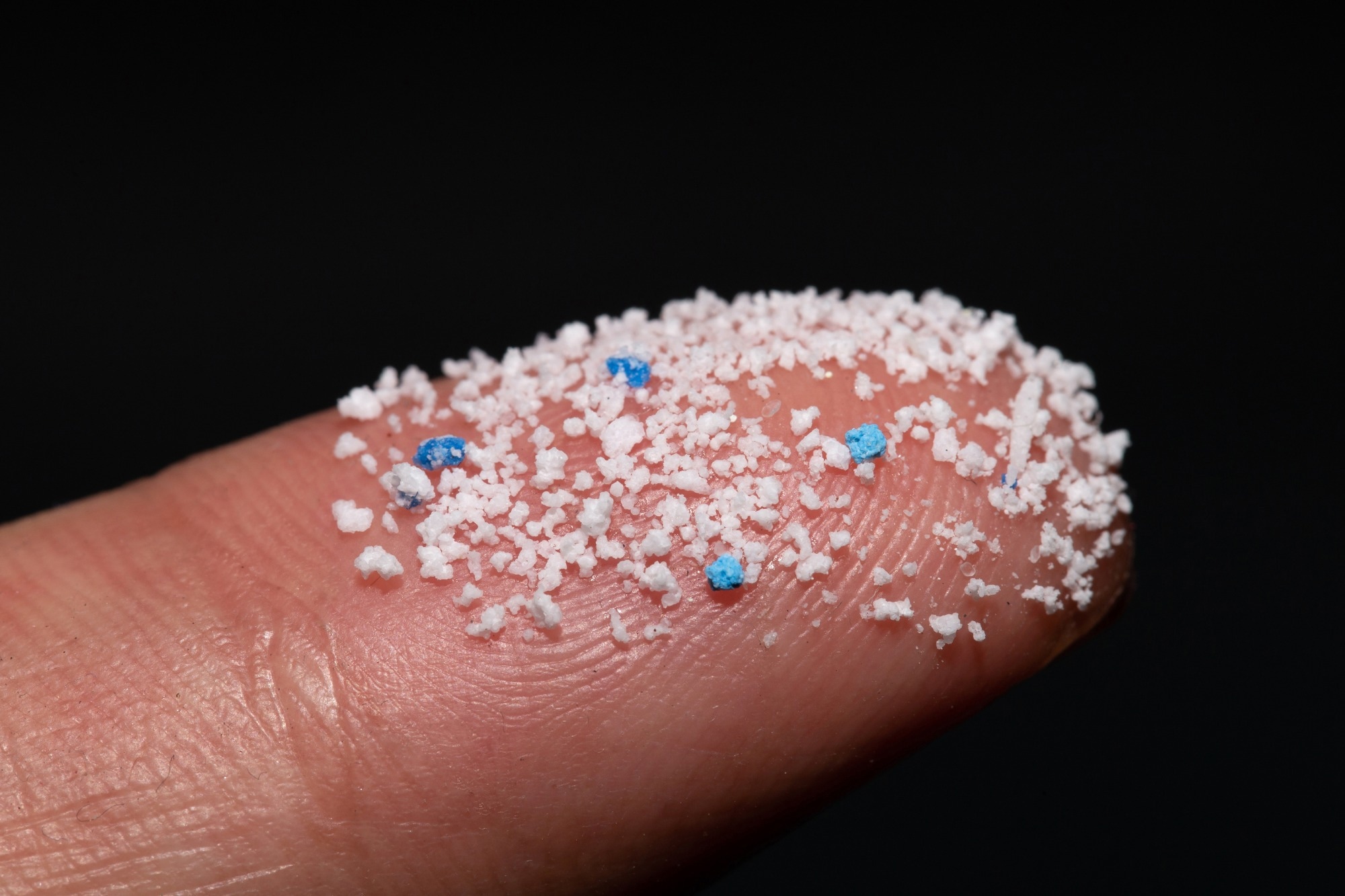Filtering out microplastics from water is difficult because they can bypass most filtration systems owing to their microscopic size. In a study published in the journal Chemosphere, magnetic iron oxide (Fe3O4) nanoparticles were evaluated as potential candidates for the adsorptive removal of microplastics.

Study: Adsorptive removal of micron-sized polystyrene particles using magnetic iron oxide nanoparticles. Image Credit: chayanuphol/Shutterstock.com
Harmful Effects of Plastic Pollution
Increased plastic demand has to an increase in plastic pollution, which can have significant consequences for natural ecosystems as well as human health and safety. Inadequate recycling and mishandling of plastic worsen plastic pollution.
Plastics have extended breakdown durations and are likely to accumulate in the ecosystem because of their high stability and durability. Growing plastic levels in the environment, particularly in marine ecosystems, lead to growing concern for the environment. Plastic is carried to water bodies by wind and ocean currents, and it fragments into micro and nanoplastics over time.
It is difficult for living organisms to avoid consuming plastic waste because of the universal nature of microplastics. Once consumed, these microplastics are transferred up the food chain and may ultimately have a negative impact on human health.
How Can Microplastics be Removed from Water?
To remove microplastics from wastewater and drinking water magnetic extraction, electrocoagulation, and membrane separation technologies are suggested. However, it is difficult to eliminate microplastics having diameters smaller than 1 μm. So, these microplastics are common in wastewater treatment facilities.
To successfully eliminate microplastics from water, a consistent, simple, quick, and repeatable technique must be developed.
Removing Pollutants with Iron Oxide Nanoparticles
As nanoparticles tend to have high specific areas, a cluster of iron oxide (Fe3O4) nanoparticles has a relatively high adsorption site density. Therefore, iron oxide nanoparticles have been employed in a variety of areas, including the removal of contaminants in the environment.
The magnetic effects of iron oxide enable quicker removal of contaminant nanoparticles in comparison with centrifuge machines and filtering procedures.
Once magnetic separation and regenerative processes are finished, the iron oxide nanoparticles may be reused, making them a viable adsorption material for eliminating environmental contaminants.
What Did the Researchers Do?
The team investigated the use of magnetic Fe3O4 nanoparticles for filtering out microplastics from water via adsorption. To model the behavior of microplastics, polystyrene (PS) microparticles were used.
The researchers examined the process kinetics and isothermal adsorptive characteristics of polystyrene microparticles on Fe3O4 nanoparticles.
They also conducted adsorptive tests for different groups of polystyrene microparticles with various average diameters to look into the adsorbing effectiveness of Fe3O4 nanoparticles. The hydrophobic and electrostatic dynamics involved in the adsorption process of Fe3O4 and polystyrene microparticles were investigated as well.
The team also determined the reusability of Fe3O4 nanoparticles by desorbing them from Fe3O4-polystyrene complexes (Fe3O4-PS).
Main Findings of the Research
In this study, the team managed to successfully extract polystyrene microparticles from liquid environments using the combined effect of Fe3O4 nanoparticles and a magnet. The attachment of the polystyrene microparticles onto the Fe3O4 nanoparticles enabled this process.
It was observed in TEM imaging that the Fe3O4 nanoparticles encompassed and gathered the polystyrene microparticles, enabling a magnet to be used for extracting the resultant Fe3O4-polystyrene complexes from the fluid.
It was established that the agglomeration of Fe3O4 with polystyrene microparticles was mostly due to hydrophobic interaction among them. When an actual sample of water was analyzed, suspended solid matter and coinciding ions present in the sample impeded the deposition of polystyrene microparticles onto Fe3O4 nanoparticles. Nonetheless, adsorption effectiveness may be enhanced by incorporating larger quantities of the adsorbent Fe3O4 nanoparticles.
Fe3O4 nanoparticles were separated from the Fe3O4-polystyrene complexes using a straightforward sonication procedure. The research highlighted the potential of employing Fe3O4 nanoparticles to efficiently eliminate microplastics from the ecosystem.
References
Heo, Y., Lee, E.-H., & Lee, S.-W. (2022). Adsorptive removal of micron-sized polystyrene particles using magnetic iron oxide nanoparticles. Chemosphere. Available at: https://doi.org/10.1016/j.chemosphere.2022.135672
Disclaimer: The views expressed here are those of the author expressed in their private capacity and do not necessarily represent the views of AZoM.com Limited T/A AZoNetwork the owner and operator of this website. This disclaimer forms part of the Terms and conditions of use of this website.